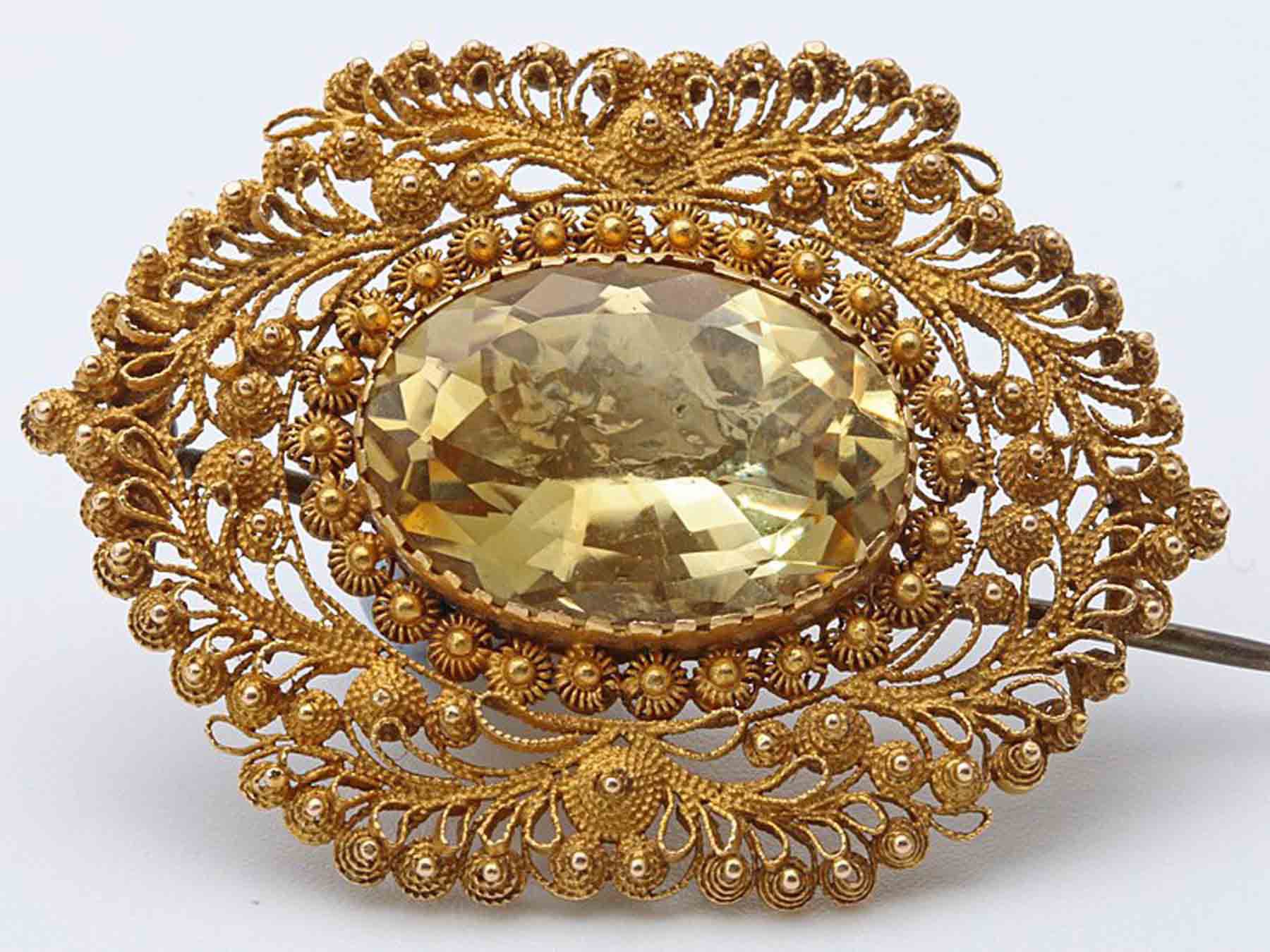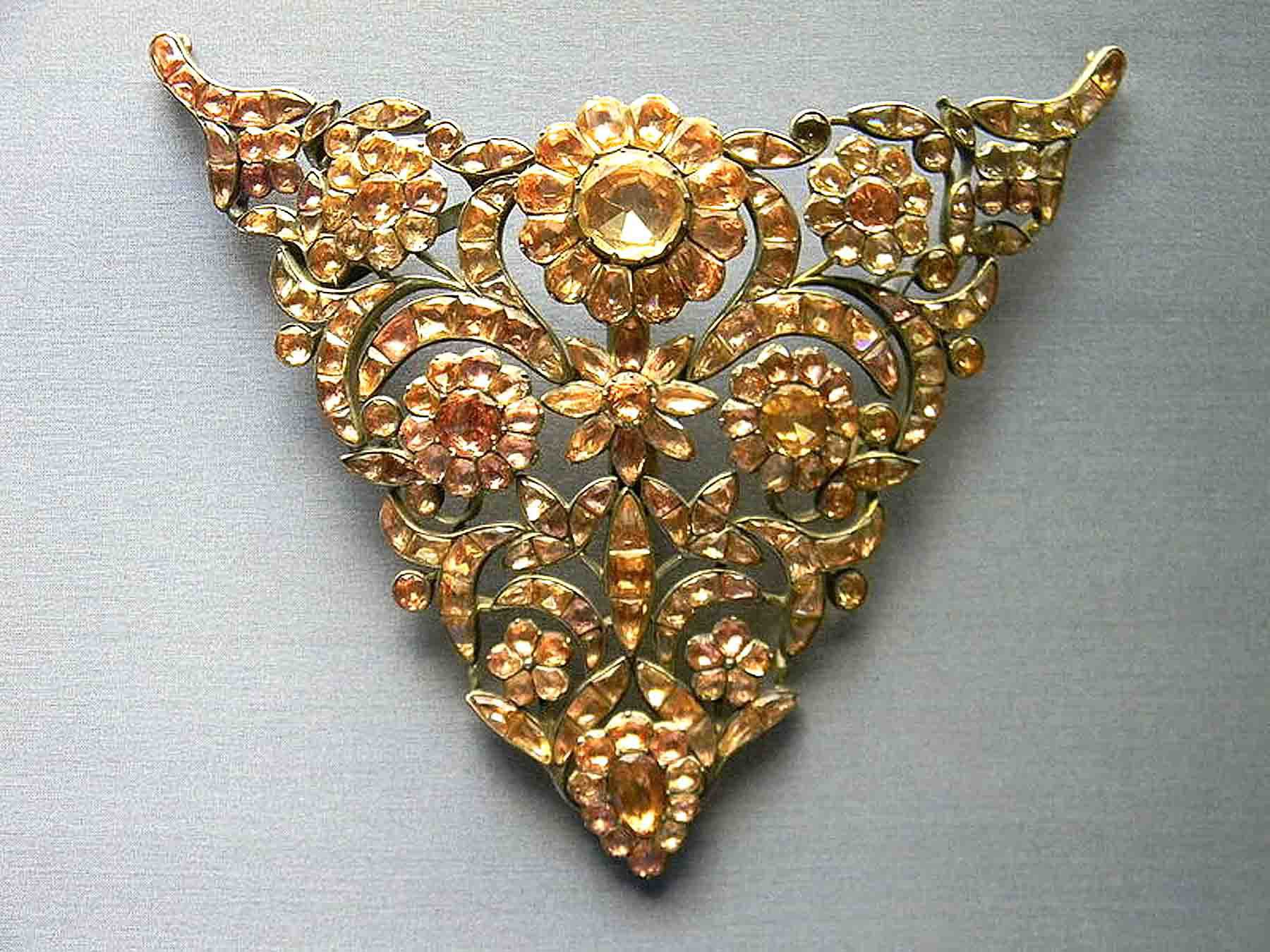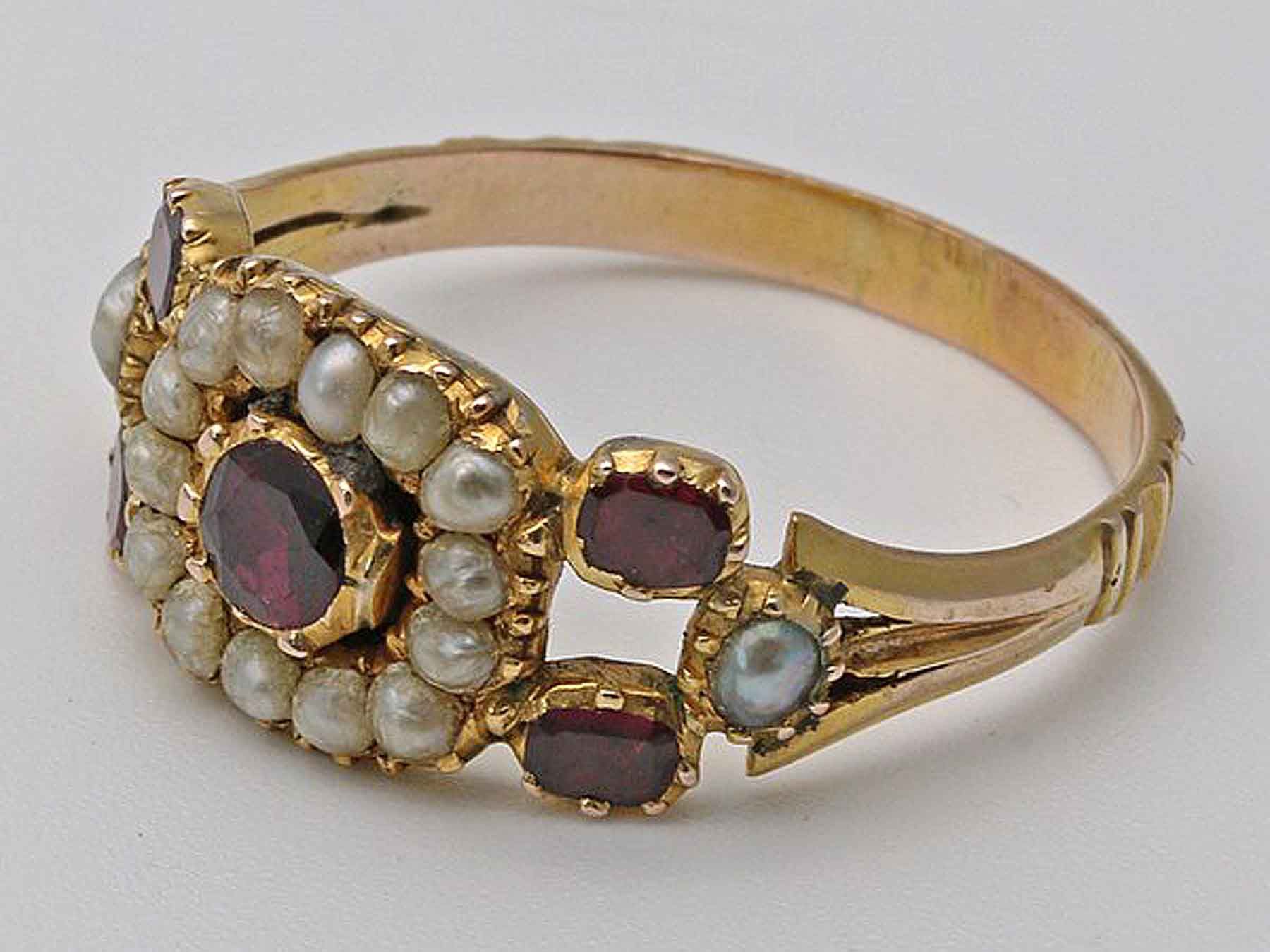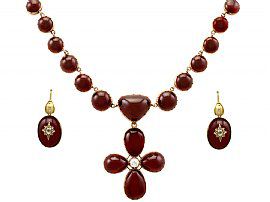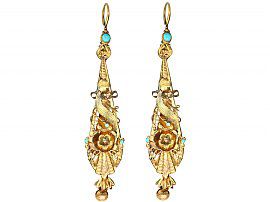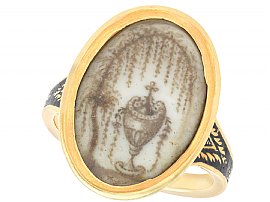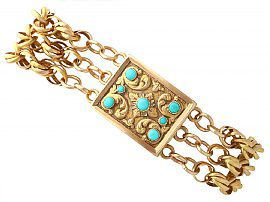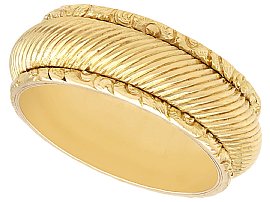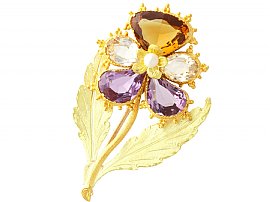History of Georgian Jewellery
In terms of Georgian jewellery history, the period spanned from 1714 to 1830 encompassing the reign of George I, George II, George III and George IV (many consider 'true' Georgian period to exclude George IV’s reign). During this era there were many developments in technology and fashion, both of which had a huge impact on the jewellery trends of the time.
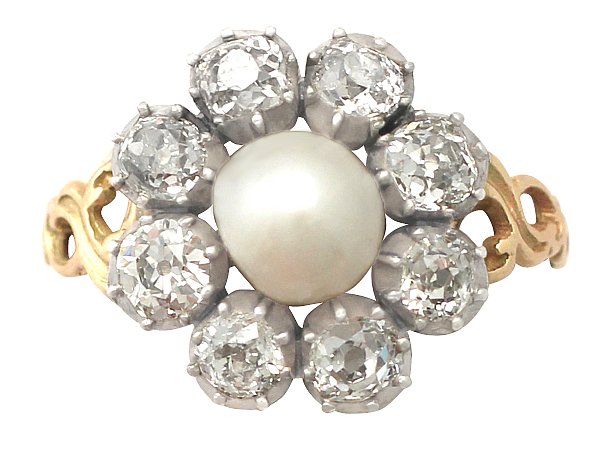
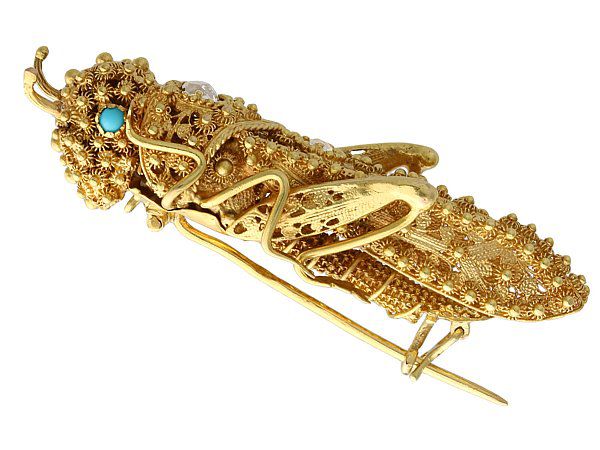
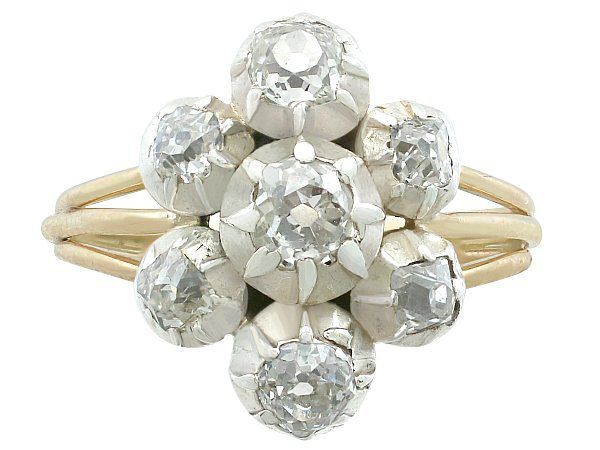
Materials and Techniques
A variety of metals and alloys were used in the crafting of jewellery during this era. The most popular type of metal was silver, although some more highly priced pieces were made from yellow gold, rose gold or on occasion red gold. For pieces of slightly less value, steel, iron and an alloy called 'pinchbeck' (named after its creator, Christopher Pinchbeck and made by combining zinc and copper) were very common.
Despite the availability of resources such as these metals and diamonds that had been discovered in Brazil during the 1730s, many Georgian jewellers would also recycle old metal- melting down jewellery that had become less fashionable to create new pieces. Because of this technique little original jewellery was retained and true Georgian era jewellery is now fairly rare to come across, therefore it is often very high value.
It is often difficult to identify the exact composition of metals in Georgian jewellery as hallmarking jewellery had not been initiated yet (and wouldn’t come into practice until the 1900s). Consequently, these items would need professional judgement to determine their exact age, origin and makeup.
Georgian jewellery was most commonly hand crafted. The style trends of the time demanded intricate metal work and techniques such as repoussé, which was the hammering of malleable metals into complex and detailed designs (used frequently in pieces such as memorial bracelets).
With regards to gemstones, diamonds were almost exclusively used up until 1750. Later other gemstones grew in popularity and effects created by overlays, pastes and enamels were more frequently used, creating a more colourful variety of jewellery.
The concept of open back settings, often favoured for how the light affects the look of the stone, had not yet become common and therefore closed backs were used to set most gemstones and pastes.
Another way in which the stones were treated was foiling; a technique which consisted of painting a metal coating around the gemstone to enhance the stone’s brilliance. The favoured cuts of gems during this era were Rose cut and Old Mine cut, however a few Table cuts were also still in use.
At the turn of the 19th Century the availability of gold and precious gems decreased as a result of war spreading throughout Europe (namely the Napoleonic wars, 1803-1815). Gold and precious gems had to be sacrificed towards the war effort, leaving little for jewellery manufacture. Due to this there was an increase of popularity in Cannetille- the use of lots of tiny wires that intricately wrapped around each other to create delicate and ornate pieces of jewellery- as it used minimal metal compared to other techniques.
Georgian Jewellery Styles and Motifs
There were many stylistic changes taking place throughout the Georgian period. The early Georgian era celebrated the Baroque style which featured intricate designs, symmetry and lacy aesthetics. Despite being delicate these designs were still bold and large in contrast to the Rococo style that followed. Rococo jewellery was more elegant, light and asymmetrical, yet still had many motifs in common with Baroque style such as bows, flowers, ribbons and leaves.
During both of these stylistic periods the historical site of Pompeii was being excavated (circa 1740) which resulted in a surge of classical Roman imagery such as laurels, grape vines, leaves and keys with an emphasis geometric and simple designs. This style is now often referred to as 'Neo-classical Georgian'.
Another factor that contributed to this Neo-classical style was the fact that Napoleon had been at war with Egypt. This led to the influence of Egyptian motifs such as pyramids and papyrus leaves on Georgian jewellery trends.
Popular Types of Jewellery
As a result of the development of candles that could burn brighter and for longer during the Georgian period, there was an increase in evening socialising including extravagant balls and soirees. With this new distinction between day life and evening life came a new divide between what was considered to be 'day jewellery' and 'evening jewellery'. During the daylight hours it was more common to adorn yourself with brightly coloured gemstones and pastes (such as garnets, differently coloured topaz, emeralds and rubies). The fashion was for extravagance and abundance, with many items of jewellery worn at once, such as multiple large gemstone rings on each finger. When it came to evening wear however, diamonds prevailed.
The preferred style of necklace evolved from ribbon style chokers to more extravagant and sparkling necklaces full of jewels. An example of this trend is the diamond rivière necklace which consisted of a graduated line of round diamonds arranged all the way around the neck.
When it came to earrings, Giranadole was the most popular style in the early Georgian era but was later replaced by the pendeloque as the earring of choice. Girandole earrings have a curving ornate shape, reminiscent of the candelabras of the Georgian era, featuring 3 or more dangling pear shaped ornaments. Pendeloque earrings feature a rounded top, classically attached to a bow motif from which dangles a drop design. In 1773 came the invention of clip on earrings so that ears did not necessarily have to be pierced to be adorned with jewels.
Brooches developed from simple gemstones and gardinetti brooches (the latter of which would depict a vase or basket of flowers with colourful gemstone petals), to more extravagant bouquets which would be set loosely (or ‘en tremblant’) in order to create movement so that the brooches would catch the light and colourfully glimmer.
A variety of gemstones would usually make up a ring. Often, they would consist of one main bright stone surrounded by a multitude of smaller diamonds. Alternatively, bands full of gemstones, either the full way around or just halfway, would be worn stacked up on fingers.
Unusual Jewellery
Other popular types of jewellery during the Georgian period that are far less well-known today include the 'stomacher', which was a decorative panel which would be fitted to the front of a woman’s corset. Also the 'longchain', a chain, normally around a metre long which women wore tucked into their girdle and men wore attached to a watch around their necks. In addition to the 'chatelaine', which was worn around the waist and had useful household objects (such as scissors and thimbles) attached to it, suspended on chains.
Sentimental jewellery was also very fashionable during the Georgian period. Lover’s eye lockets were exchanged between couples, each one with a small depiction of one of the pairs’ eye painted onto the locket. Mourning jewellery which was used to memorialise the dead was of a similar aesthetic and this style later evolved into rings depicting motifs such as skulls and skeletons.
Finally, acrostic jewellery was very fashionable. Rings were the most common type of acrostic jewellery; they would have a line of gemstones, the first letter of each gem spelling out a word, most commonly a name or sentiment.
Georgian jewellery, whether Baroque, Rococo or Neo-Classical was characterised by exuberance and extravagance, much like the social lifestyle trends that were developing at the time.
